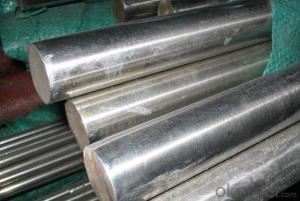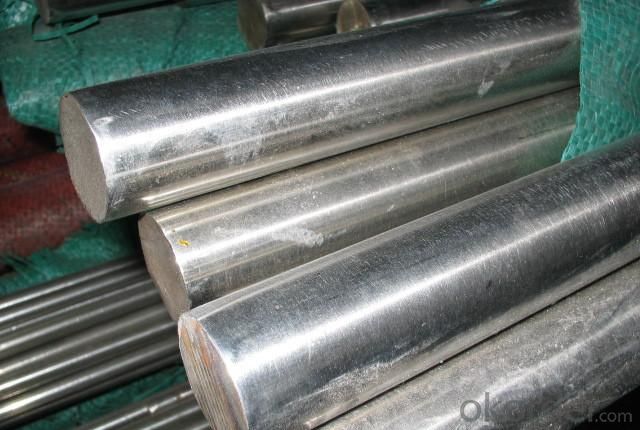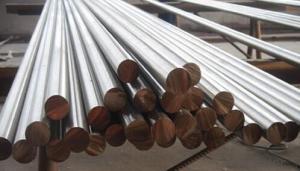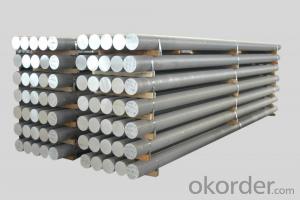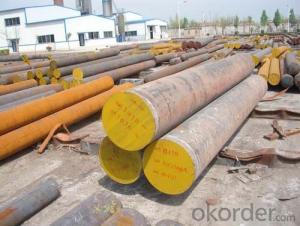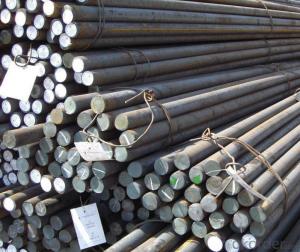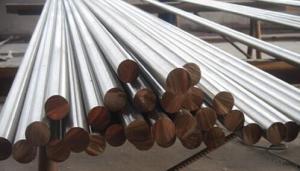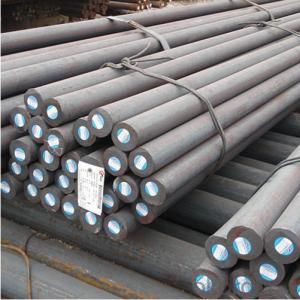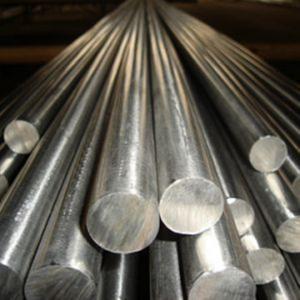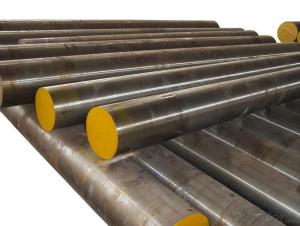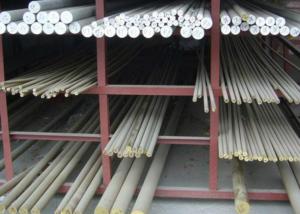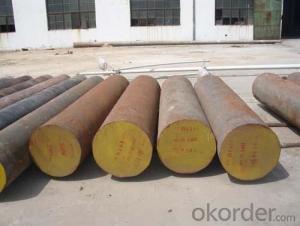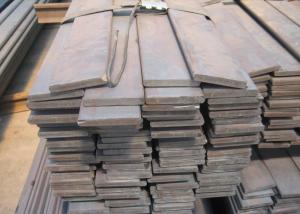Alloy Steel 40Mn Round Bar CNBM 16MM-300MM
- Loading Port:
- Shanghai
- Payment Terms:
- TT or LC
- Min Order Qty:
- 25 m.t.
- Supply Capability:
- 500000 m.t./month
OKorder Service Pledge
OKorder Financial Service
You Might Also Like
Specification
Alloy round steel bar 40Mn
Product Description
1. Sizes: Diameter: 16mm-300mm; Length: 6m, 9m, 12m
2. Grade: 40Mn
3. Invoicing on theoretical weight or actual weight as customer’s request
4. Shape: Round bar, solid bar of steel with circular section
5. Technique: Hot rolled, forged, cold rolled
Specification:
Material | 40Mn | Round bar | Dia(mm) | 16-600 |
Process | EAF + LF + VD + Forged + Heat Treatment (optional) | Length (mm) | Max 12000 | |
Heat treatment | Normalized / Annealed / Quenched / tempered | Flat bar | Thickness(mm) | 8-500 |
Delivery condition | Hot forged +Rough machined (black surface after Q/T)+ Turned (optional) | Width(mm) | 70-200 | |
Test | Ultrasonic test according to SEP 1921-84 D/d | Length (mm) | Max 12000 |
Chemical Composition
C | Si | Mn | Cr | Ni | Cu |
0.5~0.8 | 0.17~0.37 | 0.25~1.2 | ≤0.25 | ≤0.30 | ≤0.25 |
Packing and Delivery:
Packing in bundle with steel strips and shipped by break bulk vessel or container (depend on target market and different ports)
Delivery Detail: Approx.45 days
Usage and Applications
1. Steel round bar is used in a large number of architectural and engineering structures. Or it can be used in construction of plants for the production of steel house frames, high-voltage transmission towers, bridges, vehicles, boilers, containers, ships, etc.
2. And we can use this kind of product on the performance of the mechanical parts if the demand is not very high.
3. Some especial material steel round bar can be used for main shaft of steamer, hummer shank, with big section and supper force.
Product Show
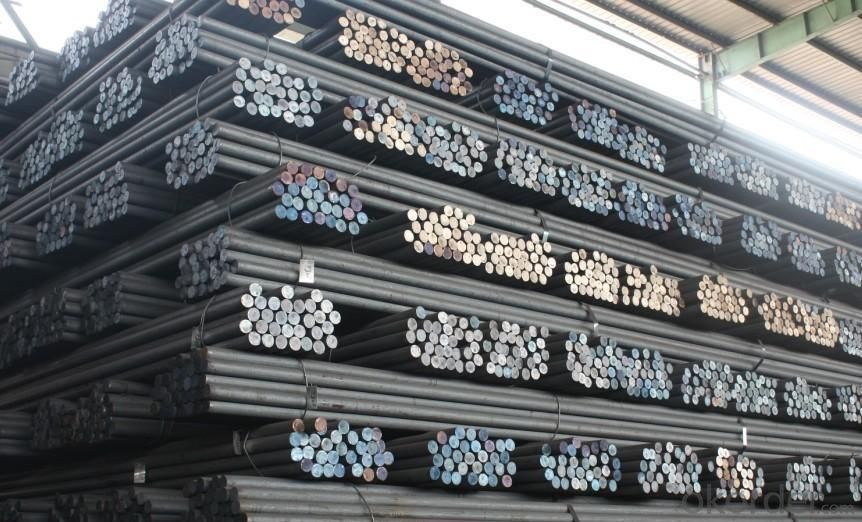
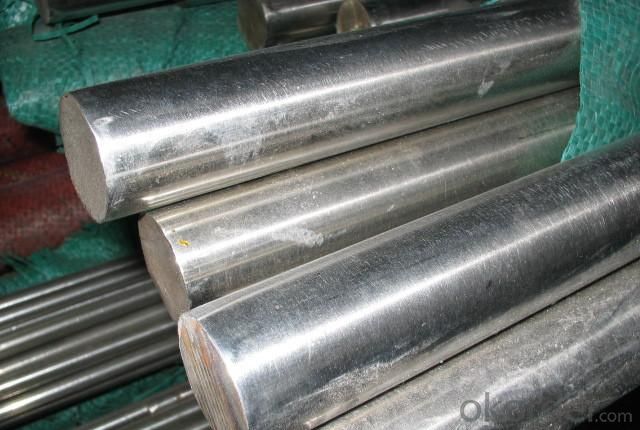
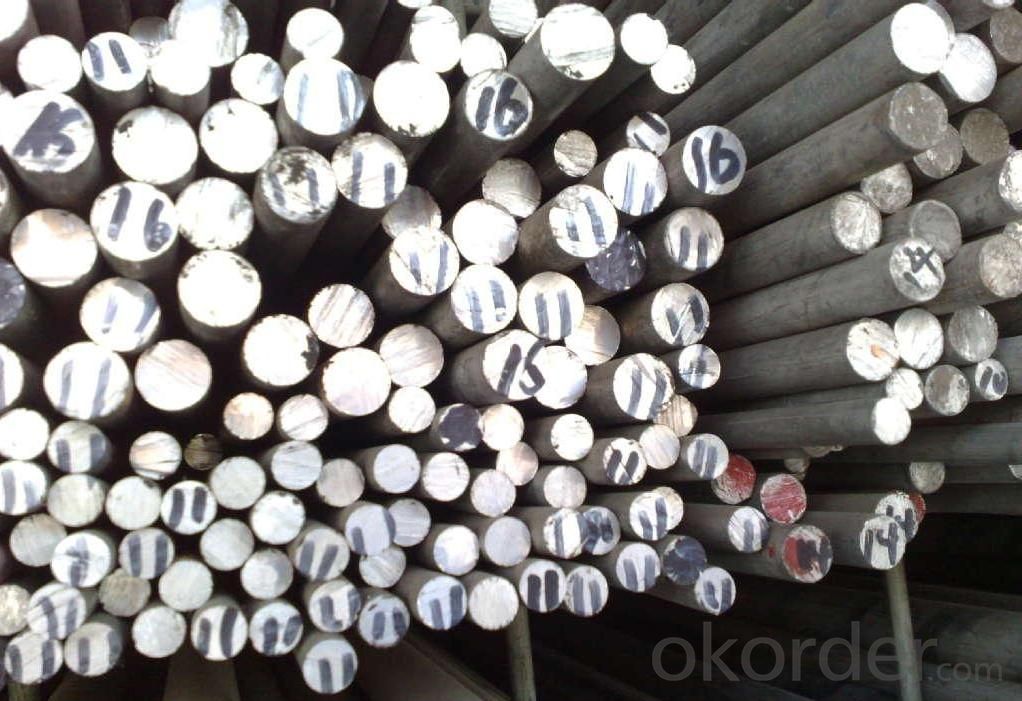
- Q: What are the common challenges in machining titanium alloys?
- Successful and efficient results in machining titanium alloys require addressing several common challenges. One primary challenge is the inherent strength and hardness of the material. Titanium alloys are renowned for their excellent strength-to-weight ratio, making them ideal for various applications. However, this same strength makes them difficult to machine. The high strength of titanium alloys increases the cutting forces needed during machining, resulting in faster tool wear and reduced tool life. This necessitates the use of robust cutting tools made from carbide or ceramic, capable of withstanding demanding conditions and maintaining cutting performance. Another challenge in machining titanium alloys is their poor thermal conductivity. This characteristic leads to rapid heat buildup during cutting, causing localized high temperatures. These high temperatures can cause thermal damage to both the cutting tool and the workpiece, reducing dimensional accuracy and surface finish. To overcome this challenge, implementing effective cooling and lubrication techniques, such as using coolant or high-pressure air, is crucial to dissipate heat and prevent overheating. Furthermore, machining titanium alloys often results in the generation of built-up edge (BUE). BUE refers to the accumulation of workpiece material on the cutting tool, leading to poor chip evacuation, increased cutting forces, and surface finish issues. To mitigate BUE formation, it is recommended to use appropriate cutting speeds and feed rates, as well as cutting fluids that aid in chip evacuation and prevent material adhesion on the tool. Additionally, titanium alloys react strongly with oxygen, causing the formation of a stubborn oxide layer on the surface during machining. This oxide layer can cause tool chipping and premature wear. To combat this, it is necessary to employ suitable cutting speeds and feeds that efficiently remove material while minimizing prolonged exposure to the reactive nature of titanium alloys. Lastly, the low thermal expansion coefficient of titanium alloys can result in workpiece distortion and dimensional inaccuracies. To address this challenge, it is important to ensure proper fixturing and clamping techniques that minimize workpiece movement during machining. In conclusion, machining titanium alloys presents challenges such as high cutting forces, poor thermal conductivity, built-up edge formation, reactive oxide layer, and workpiece distortion. These challenges can be overcome by using appropriate cutting tools, effective cooling and lubrication techniques, proper cutting parameters, and careful workpiece handling.
- Q: What are the main environmental impacts of special steel production?
- The main environmental impacts of special steel production include high energy consumption, significant greenhouse gas emissions, and the generation of large amounts of air and water pollution. The production process requires immense amounts of energy, primarily from fossil fuels, leading to the release of carbon dioxide and other greenhouse gases, contributing to climate change. Additionally, the production of special steel involves the use of various chemicals and the generation of hazardous waste, which can contaminate air and water sources, harming ecosystems and human health. Efforts are being made to mitigate these impacts through improved technologies and practices, such as energy efficiency measures and waste management systems, to minimize the environmental footprint of special steel production.
- Q: What are the different methods of controlling the grain size in special steel?
- There are several methods to control the grain size in special steel, aiming to achieve the desired mechanical properties and performance. Some of these methods include: 1. Alloying: By carefully selecting and controlling the composition of alloying elements in the steel, the grain size can be controlled. For example, elements such as niobium, vanadium, and titanium can effectively refine the grain size. 2. Heat treatment: The heat treatment process plays a crucial role in controlling the grain size. Techniques like annealing, normalizing, and quenching can be employed to manipulate the grain size. For instance, slow cooling during annealing promotes the growth of larger grains, while rapid cooling during quenching can lead to smaller grain sizes. 3. Deformation processing: Applying mechanical deformation, such as rolling, forging, or extrusion, can help refine the grain structure. These processes induce strain and promote the formation of smaller and more uniform grains. 4. Grain growth inhibitors: Adding certain elements to the steel, such as aluminum or zirconium, can act as grain growth inhibitors. These elements form fine particles that impede grain growth during heat treatment, resulting in a smaller grain size. 5. Transformation temperature control: By controlling the transformation temperature during heat treatment, the grain size can be manipulated. For example, lowering the austenitizing temperature can produce a finer grain structure in the final product. 6. Rapid solidification: Utilizing techniques like spray forming or rapid quenching can result in an ultrafine-grained microstructure. The rapid cooling prevents grain growth, leading to a fine and homogeneous grain structure. 7. Severe plastic deformation (SPD) techniques: SPD techniques, such as equal channel angular pressing (ECAP) or high-pressure torsion (HPT), can impose significant strain on the material, leading to a refined grain structure. These techniques are typically used for producing ultrafine-grained or nanostructured steels. It is important to note that the choice of the method for controlling grain size in special steel depends on the desired properties, the alloy composition, and the intended application of the final product.
- Q: What is the significance of special steel in the medical field?
- Special steel is of great significance in the medical field due to its unique properties and characteristics. It is used to manufacture surgical instruments, implants, and medical devices that require high strength, corrosion resistance, and biocompatibility. Special steel ensures the safety and effectiveness of medical interventions, contributing to improved patient outcomes and overall healthcare advancements.
- Q: What are the different heat treatment defects in special steel?
- During the heat treatment process of special steel, various defects can occur. Some of the most frequently encountered defects are as follows: 1. Decarburization: This defect arises when the steel's outer layers lose carbon due to exposure to high temperatures in an environment rich in oxygen. The consequence of decarburization is reduced hardness and strength in the treated steel. 2. Quench cracking: Also known as cracking during quenching, this defect emerges when the steel undergoes rapid cooling subsequent to heating. The differential cooling rates can induce internal stresses, resulting in cracks within the material. 3. Distortion: Distortion refers to alterations in the shape or dimensions of the steel during the heat treatment process. It can be caused by uneven heating or cooling, inadequate fixturing, or improper quenching techniques. 4. Soft spots: Soft spots are localized areas of reduced hardness in the treated steel. These spots can occur due to insufficient heating or improper quenching, leading to diminished mechanical strength in those regions. 5. Overheating: Overheating is a defect that occurs when the steel is subjected to excessively high temperatures during the heat treatment process. This can lead to grain growth, reduced toughness, and overall decreased material properties. 6. Case hardening problems: Special steels often undergo case hardening processes, such as carburizing or nitriding, to create a hardened outer layer. However, several defects can arise during these processes, including inadequate or excessive hardening, poor case depth, or uneven distribution of hardness. 7. Residual stresses: Residual stresses are internal stresses that persist in the steel after the heat treatment process. If not properly controlled, these stresses can cause dimensional instability, warping, or even cracking. To prevent or minimize these heat treatment defects, it is crucial to adhere to proper heat treatment procedures. This includes precise temperature control, appropriate cooling rates, and suitable fixturing techniques. Furthermore, the use of high-quality heat treatment equipment, close monitoring of the process, and thorough inspections can aid in detecting and rectifying any potential defects in special steel.
- Q: How does special steel contribute to the power transmission sector?
- Special steel plays a crucial role in the power transmission sector by offering enhanced strength, durability, and corrosion resistance. It is used to manufacture various components like gears, shafts, bearings, and turbines, which are essential for transmitting power efficiently and reliably. The exceptional properties of special steel ensure that these components can withstand high loads, extreme temperatures, and harsh operating conditions, thus contributing to the overall efficiency and reliability of power transmission systems.
- Q: How does special steel perform in terms of high-temperature strength?
- Special steel typically performs very well in terms of high-temperature strength. It has excellent resistance to thermal fatigue, oxidation, and creep, allowing it to withstand extreme heat conditions without losing its structural integrity or mechanical properties. This makes special steel a preferred choice in applications where high-temperature strength is crucial, such as in the aerospace, power generation, and petrochemical industries.
- Q: How does special steel perform in renewable energy applications?
- Special steel performs exceptionally well in renewable energy applications due to its unique properties and characteristics. It offers high strength, durability, and corrosion resistance, making it ideal for withstanding the harsh environmental conditions typically found in renewable energy projects. Special steel is commonly used in wind turbine components, solar panel frames, hydroelectric power plant infrastructure, and geothermal power systems. Its superior mechanical properties ensure efficient energy generation and long-term performance, contributing to the overall success and sustainability of renewable energy applications.
- Q: How does special steel contribute to electrical conductivity?
- Special steel, also known as electrical steel or silicon steel, plays a crucial role in enhancing electrical conductivity. This type of steel is specifically designed to minimize the electrical losses that occur during the transmission and distribution of electrical power. It achieves this by reducing the eddy current losses and hysteresis losses that arise when an alternating current (AC) flows through a magnetic material. One of the main factors that make special steel highly conductive is its chemical composition. It is alloyed with specific elements such as silicon, which improves its magnetic properties and reduces its electrical resistance. The addition of silicon increases the electrical resistivity of the steel, making it more suitable for applications that require low energy loss and efficient electrical conduction. Moreover, special steel is manufactured with a carefully controlled grain structure, which aligns the crystals in the material in a specific orientation. This alignment, known as grain-oriented, allows the steel to exhibit superior magnetic properties, making it highly efficient in conducting electrical currents. It also reduces the magnetic losses that occur when the magnetic field changes direction, further enhancing the overall electrical conductivity. The unique properties of special steel make it an ideal choice for various electrical applications, such as transformer cores, electric motors, generators, and other electromagnetic devices. Its high electrical conductivity ensures minimal energy loss during the transmission and distribution of electricity, ultimately leading to more efficient and cost-effective electrical systems. In summary, special steel significantly contributes to electrical conductivity by minimizing electrical losses through its specific chemical composition and grain structure. Its low electrical resistance and superior magnetic properties make it an essential material for optimizing energy efficiency in electrical systems.
- Q: What are the properties of boron steel?
- Boron steel, also known as boron-alloyed steel, possesses several unique properties. It is exceptionally strong and has a high tensile strength, making it ideal for applications that require high-strength materials. Boron steel also exhibits good hardenability, meaning it can be hardened by heat treatment processes such as quenching and tempering. Additionally, it has excellent wear resistance and is often used in the manufacturing of cutting tools and wear-resistant components. Moreover, boron steel offers good weldability and formability, allowing it to be easily shaped and joined. Overall, the properties of boron steel make it a valuable material in various industries, including automotive, construction, and tool manufacturing.
Send your message to us
Alloy Steel 40Mn Round Bar CNBM 16MM-300MM
- Loading Port:
- Shanghai
- Payment Terms:
- TT or LC
- Min Order Qty:
- 25 m.t.
- Supply Capability:
- 500000 m.t./month
OKorder Service Pledge
OKorder Financial Service
Similar products
Hot products
Hot Searches
Related keywords
